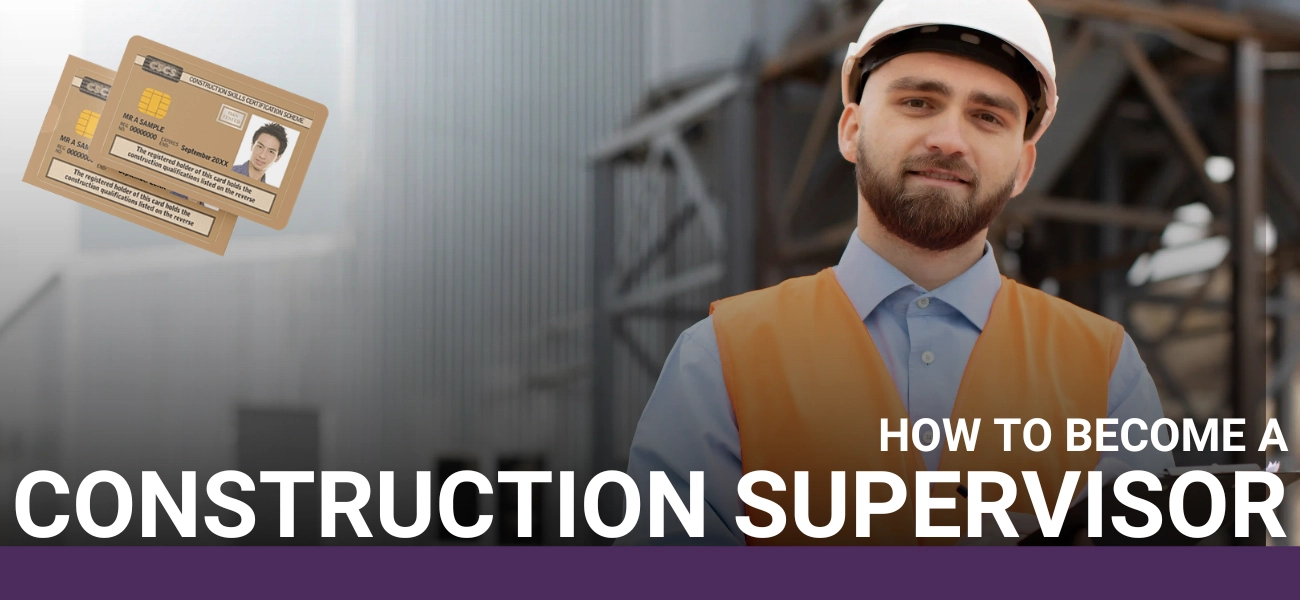If you’re looking to step up in your construction career, becoming a Construction Supervisor is a smart move. It’s a role that blends hands-on site knowledge with leadership, giving you more responsibility and greater earning potential. But how do you get there? What qualifications, skills, and experience do you need?
In this blog, we’ll break down the key steps, qualifications, and tips to help you move from operative or skilled worker to site supervisor.
What Does a Construction Supervisor Do?
A Construction Supervisor plays a crucial role on-site. They act as the bridge between senior management and site operatives, overseeing daily activities and ensuring work is carried out safely, on time, and to specification.

Typical responsibilities include:
- Supervising subcontractors and trades
- Conducting site inductions and tool box talks
- Checking that health and safety protocols are followed
- Monitoring progress and quality of work
- Reporting to the Site Manager or Project Manager
- Managing small teams and allocating tasks
It’s a leadership position that requires both technical understanding and people management skills.
Step 1: Gain On-Site Experience
Before you can supervise others, you need a solid foundation in construction work. Most supervisors start their careers as:
- General labourers
- Skilled tradespeople (e.g. bricklayers, carpenters)
- Plant operatives or groundworkers
Hands-on experience helps you understand the realities of site work and builds the credibility needed to lead others effectively.
Step 2: Develop Leadership Skills
Being a good worker doesn’t automatically make someone a good supervisor. You’ll need to learn how to:
- Delegate tasks clearly
- Resolve on-site disputes
- Motivate team members
- Communicate with other departments and management
Take every opportunity to lead small tasks, shadow your current supervisor, or take part in team briefings to build these skills.
Step 3: Complete a Health & Safety Course
Health and safety is a major part of any supervisory role. You’ll need formal training to show you’re competent in identifying risks and enforcing site safety rules.
A good starting point is the SSSTS (Site Supervisor Safety Training Scheme) — a CITB-accredited 2-day course designed for those taking on a supervisory role.
It covers:
- The Health and Safety at Work Act
- Risk assessments and method statements
- Site inductions and toolbox talks
- Legal responsibilities for supervisors
Step 4: Work Towards a Recognised Qualification
If you’re serious about progressing, an NVQ is essential. The NVQ Level 3 in Occupational Work Supervision is the most relevant qualification for aspiring supervisors. It proves your ability to:
- Manage work activities and resources
- Ensure health, safety, and welfare
- Maintain quality standards
- Communicate effectively on-site
Step 5: Apply for a CSCS Gold Supervisor Card
Once you’ve completed the NVQ Level 3 and passed the relevant CITB Health, Safety and Environment Test, you’re eligible to apply for the CSCS Gold Supervisor Card.
This card:
- Proves your competence as a supervisor
- Is valid for five years
- Is recognised across the UK construction industry
Holding the gold card opens doors to better job opportunities and more responsibility.
Step 6: Keep Progressing
Once you’re working as a Construction Supervisor, don’t stop there. Consider further development such as:
- NVQ Level 4 or Level 6 in Site Management
- SMSTS (Site Management Safety Training Scheme)
- Temporary Works Supervisor Training
- Leadership and management workshops
Continued learning not only helps you perform better in your current role, but also positions you for future promotions into site management or project leadership.
FAQs:
How long does it take to become a Construction Supervisor?
It depends on your experience. If you’re already a skilled worker with site experience, you could move into a supervisory role in as little as 6–12 months with the right training.
Do I need a degree to become a supervisor?
No, degrees aren’t required. Experience, NVQs, and the right health and safety qualifications matter more in this role.
Ready to Step Up?
At Think Construction Skills, we specialise in helping professionals like you progress from the tools to leadership roles. Whether you’re just starting your journey or already leading small teams, we offer trusted, industry-recognised qualifications to move you forward — fast.

